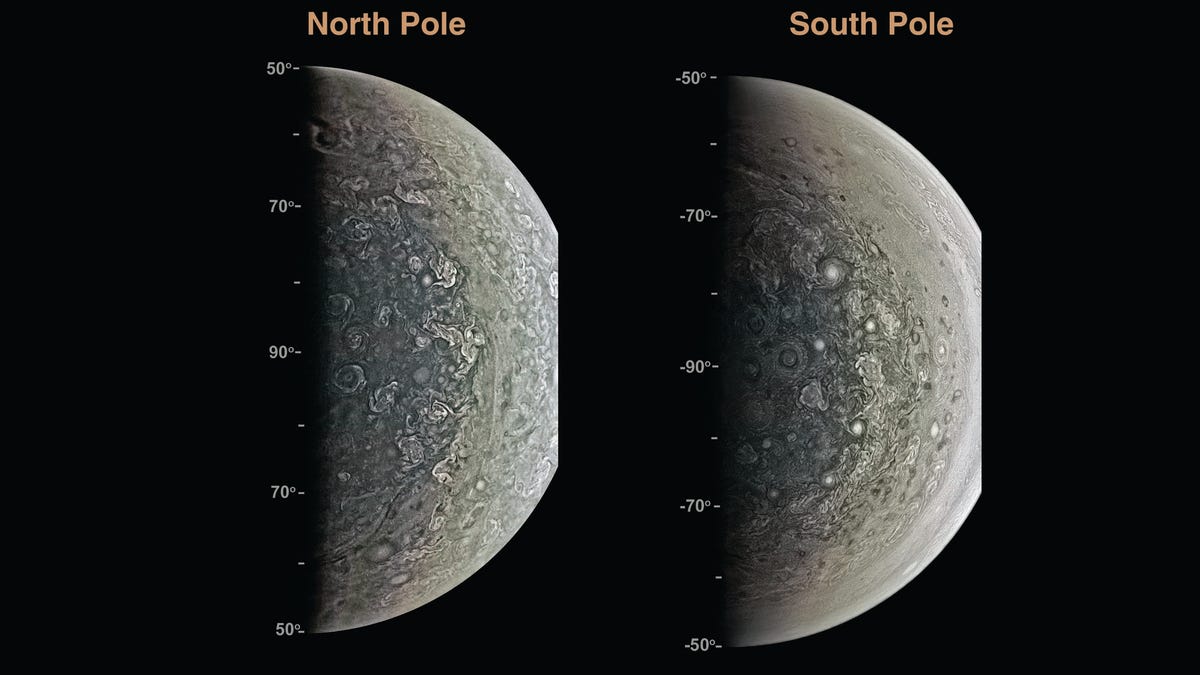The more Juno: Exploring Jupiter's deeper mysteries
Researchers are analysing the information gathered about Jupiter by NASA's Juno probe, and the first papers are in.
It's been nearly a year since NASA probe Juno entered orbit around Jupiter in July 2016. In the intervening months, we've seen some incredible photos of our solar system's largest planet. But Juno didn't spend nearly five years in transit just to take happy snaps.
It's also conducting a scientific investigation of the gas giant, much as Cassini did for Saturn. And now, researchers from around the world have collaborated on two papers, published in Science magazine, on their findings from that data.
The first paper, led by Juno Principal Investigator Scott Bolton of the Southwest Research Institute, examined data collected from Juno's close dives, less than 5,000 kilometres from the tops of Jupiter's clouds. Each of Juno's orbits takes 53.5 days, so the data comes from two close flybys.
The team studied images of Jupiter's poles, the first look we've ever really had of the regions. They found bright oval structures on both poles, very different from what we see on Saturn's poles. These oval regions are tremendous cyclones, up to 1,400 kilometres across, which are elevated above the cloud base, reaching higher into the atmosphere.
The team also examined data from a new instrument, the microwave radiometer that examines Juno's deep atmosphere.
"In the first passes, we're really just looking at the ammonia, and we're amazed," Bolton said in an interview with Science. "We look all across the planet and we see deep down the ammonia is varying."
They did not expect the ammonia gas to behave this way. "In fact, most scientists have felt that as soon as you go down a little bit into Jupiter, that everything would be well mixed, and we're finding that that's just not true at all."
Animation of Jupiter created using Juno data.
Probing deep into Jupiter, the team is also searching for a core, and found a lot of strange, deep motions.
The second paper, led by NASA astrophysicist John E. Connerney, studied Jupiter's aurorae and magnetosphere, and, once again, found flaws in our models for how these phenomena work on Jupiter. Unlike the Earth, where aurorae are powered by the magnetosphere's interactions with the solar wind, Jupiter's aurorae seem to be at least partially tied to Jupiter's rotation.
Also, the electron showers falling downward into Jupiter's upper atmosphere were distributed differently from how they occur on Earth.
Because Jupiter is so large and so massive, it can tell us a lot about how gas giants formed, and how solar systems form. Juno, Bolton said, is fundamentally changing how we perceive giant planets, that they're possibly a lot more complex than we thought.
"It will take the complete mission for us to totally understand the concept of how Jupiter formed impacts our solar system formation itself," he said.
The next close flyby is due to take place on July 11, when Juno will get a close look at Jupiter's most famous feature -- the giant red spot.
Special Reports: CNET's in-depth features in one place.
Technically Literate: Original works of short fiction with unique perspectives on tech, exclusively on CNET.


